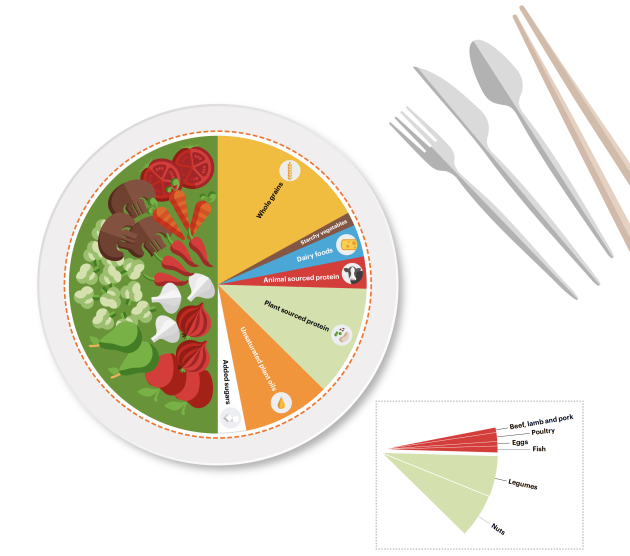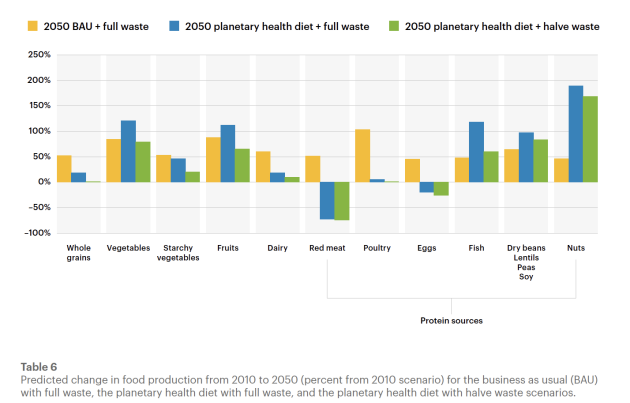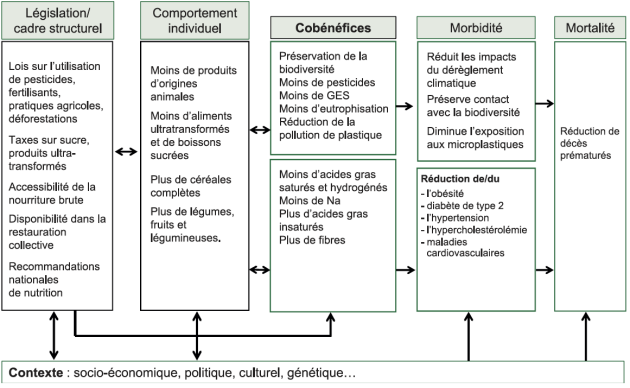Co-benefits of a healthy and sustainable diet
Our diets are inextricably linked to human health and environmental sustainability. The EAT-Lancet Commission has analysed the scientific objectives for healthy diets and sustainable food systems and integrated them into a common framework, the Safe Operating Space for Food Systems, to identify ‘win-win’ (i.e. healthy and environmentally sustainable) diets. This framework is universal for all food crops and production systems in the world, with strong potential for local adaptation and scaling up.
Healthy diets
In its report, the commission recommends a diet consisting mainly of fruit and vegetables, wholegrain cereals, pulses, nuts and unsaturated oils. Fish, seafood and poultry are consumed in very limited quantities. While starchy vegetables, dairy products, red meat, sugar and saturated fats play a marginal role in our diet.
The transformation to such diets will require major dietary changes. This includes doubling consumption of healthy foods such as fruit, vegetables, pulses and nuts, as well as reducing global consumption of less healthy foods such as added sugars and red meat by more than 50% (mainly by reducing their excessive consumption in rich countries).
In formulating these recommendations, the authors had to reconcile the objectives of population health and production system sustainability. From an environmental point of view, the significant impact of animal products, particularly red meat and dairy products, on various indicators, including greenhouse gas emissions, has been taken into account. From a public health point of view, the importance of increasing the consumption of wholegrain cereals, fruit, vegetables, nuts, seeds and pulses, while reducing the consumption of red meat and processed meats was emphasised, in particular to reduce the risk of cardiovascular disease and cancer.
In its work, the EAT-Lancet Commission analysed the potential impact of dietary changes on mortality using three different approaches. These concluded that changes in current diets towards healthier diets are likely to result in major health benefits. This includes the prevention of around 11 million deaths per year, which represents between 19% and 24% of all adult deaths.
The figure below shows the composition of an ideal diet according to the EAT-Lancet commission
A planetary health plate should consist by volume of approximately half a plate of vegetables and fruits; the other half,
displayed by contribution to calories, should consist of primarily whole grains, plant protein sources, unsaturated plant oils,
and (optionally) modest amounts of animal sources of protein.
Sustainable food production
Scientific studies show that food systems could, in theory, provide healthy diets for a world population that could reach around 10 billion by 2050, while respecting safe environmental limits. However, this will only be possible through a radical transformation of the food system that requires a combination of measures :
A major shift towards predominantly plant-based diets, as these have a lower environmental impact than diets rich in animal products.
A drastic reduction in food loss and waste, as much of the food produced in the world is lost or wasted, wasting resources and having an unnecessary environmental impact.
Major improvements in farming and food production practices, in particular by moving from an approach that focuses on quantity to one that focuses on product quality. This involves, for example, better soil management, more diversified crops and the use of environmentally-friendly techniques.
Furthermore, it is clear that a profound and successful transformation of the global food system will not be possible without strong cooperation between different sectors (agriculture, environment, health, etc.), ambitious public policies and strict and coordinated governance of land and oceans on a global scale.
The figure below illustrates the projected evolution of food production from 2010 to 2050 for different scenarios: without intervention, adoption of a global health diet alone and combined with a reduction in waste.
Predicted change in food production from 2010 to 2050 (percent from 2010 scenario) for the business as usual (BAU)
with full waste, the planetary health diet with full waste, and the planetary health diet with halve waste scenarios.


